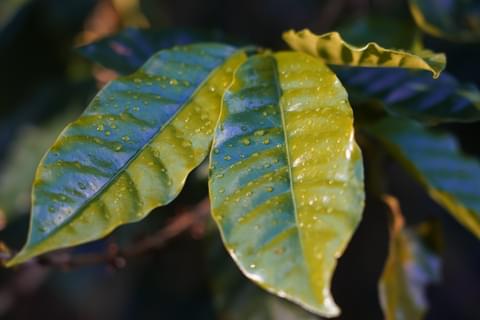
What's included
The intention of this catalog is that those working with coffee should be able to make informed decisions about which variety will work best for their situation and needs.
What’s included
This catalog covers varieties from the two species of coffee plants that are in wide cultivation globally—C. arabica (known as Arabica), and C. canephora (known as Robusta).
Arabica
Arabica is the dominant species in Central and South America and much of east Africa, and is considered to produce the highest cup quality. The Arabica species is made up of many varieties or cultivars — distinct types that are able to sexually reproduce with one another.
Robusta
Robusta is the second-most commonly grown coffee species; its commercial importance has grown steadily over the last century and it now accounts for approximately 40% of global production. The genetic diversity of robusta coffee is much larger than that of arabica, and it is only just beginning to be explored by breeders and the industry alike.
Varieties scope
The varieties in this catalog have been selected for inclusion because of their economic, historical, cultural, or genetic importance to the global cultivation of coffee. World Coffee Research consulted widely with national coffee institutions, breeders, researchers, and coffee companies from across the world to make these selections.
Because the catalog is meant to be a practical tool and guide for coffee producers, it does not aim to represent an exhaustive list of all coffee varieties in existence. The varieties included here have been selected or developed by farmers and breeders primarily over the last century, although the domestication of coffee began at least 500 years ago.
Definition of a variety
To be considered for inclusion in this catalog, varieties must meet the following standards (based on the definition of a variety as given by the International Union for the Protection of New Varieties of Plants (UPOV):
- The variety is distinct. It is distinguishable from other varieties based on the above set of characteristics.
- The variety is uniform. It can be precisely described by a set of characteristics and all the plants of this type look the same.
- The variety is stable. The variety can be reproduced in such a manner that its characteristics are unchanged in the next generation.
Note: There is some exception to the above rule of thumb. Some coffees included in this catalog — T5175, T5296, Anacafe 14, and Pacamara — do not meet the above definition because they are neither uniform nor stable from one generation to the next. They are included here because they are commonly known to farmers and grown widely in their respective regions, but it’s important to know they lack uniformity and stability and therefore do not meet the definition of variety laid out here.
Geographical scope
Arabica
The current version of the arabica catalog covers many important coffee varieties from 15 countries listed below. Many varieties in this catalog are also found in countries not listed below.
- Brazil
- Costa Rica
- El Salvador
- Guatemala
- Honduras
- India
- Indonesia
- Jamaica
- Kenya
- Malawi
- Nicaragua
- Panama
- Perú
- República Dominicana
- Rwanda
- Uganda
- Zambia
- Zimbabwe
Robusta
The current version of the catalog covers important robusta varieties in the 8 countries listed below.
- Brazil
- Mexico
- Uganda
- Indonesia
- Vietnam
- India
- Thailand
- Philippines
World Coffee Research
World Coffee Research is a 501 (c)(5) non-profit, collaborative research and development program of the global coffee industry to grow, protect, and enhance supplies of quality coffee while improving the livelihoods of the families who produce it.
Are you a coffee farmer?
We've created a printable version of our coffee variety catalog specifically for farmers. Available in English and Spanish.